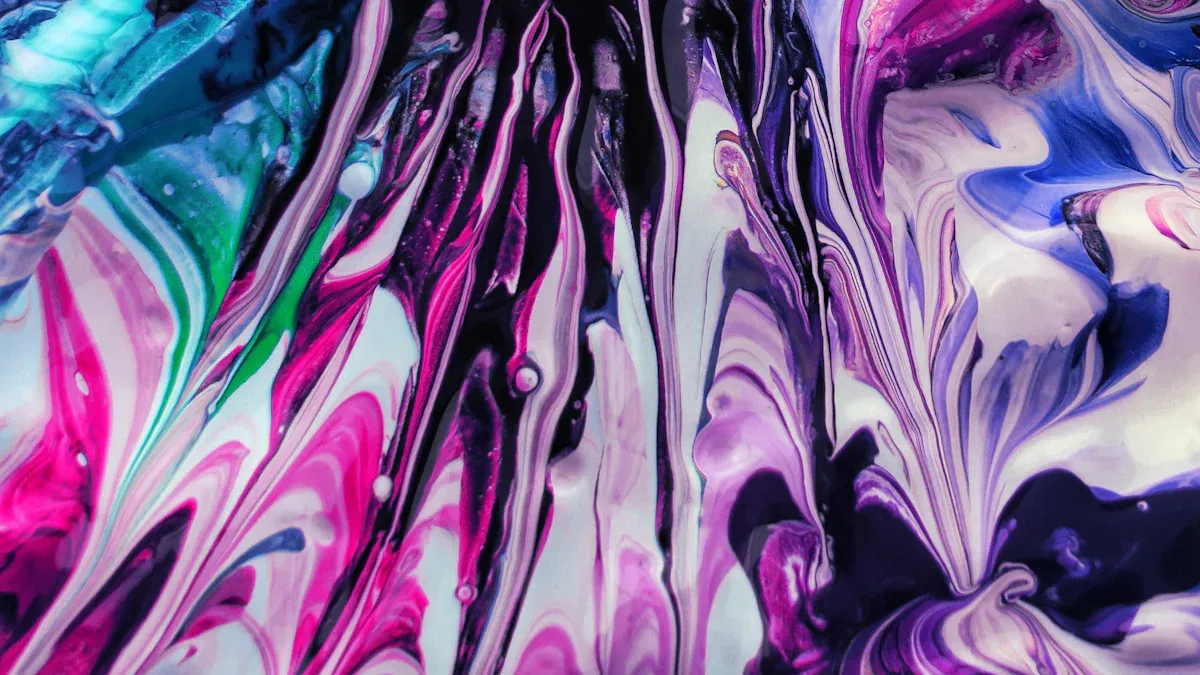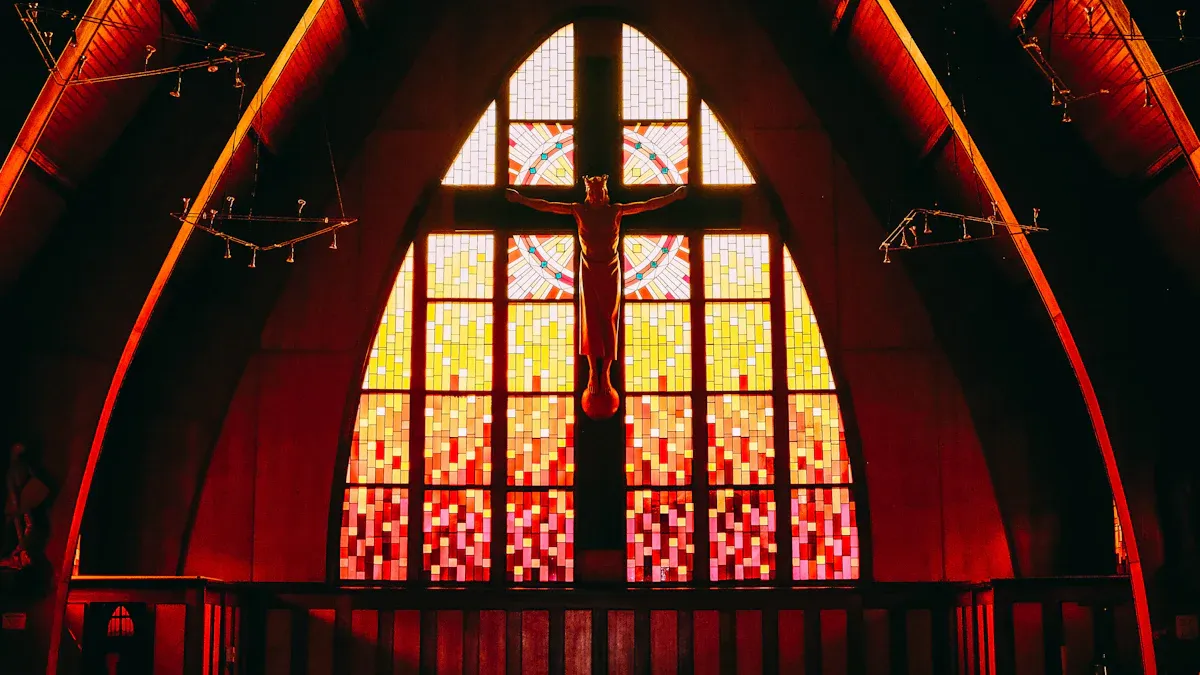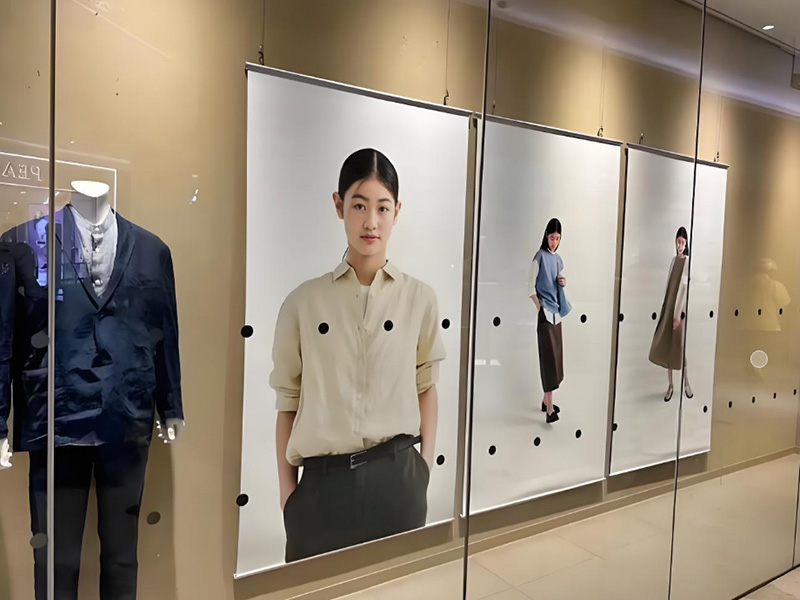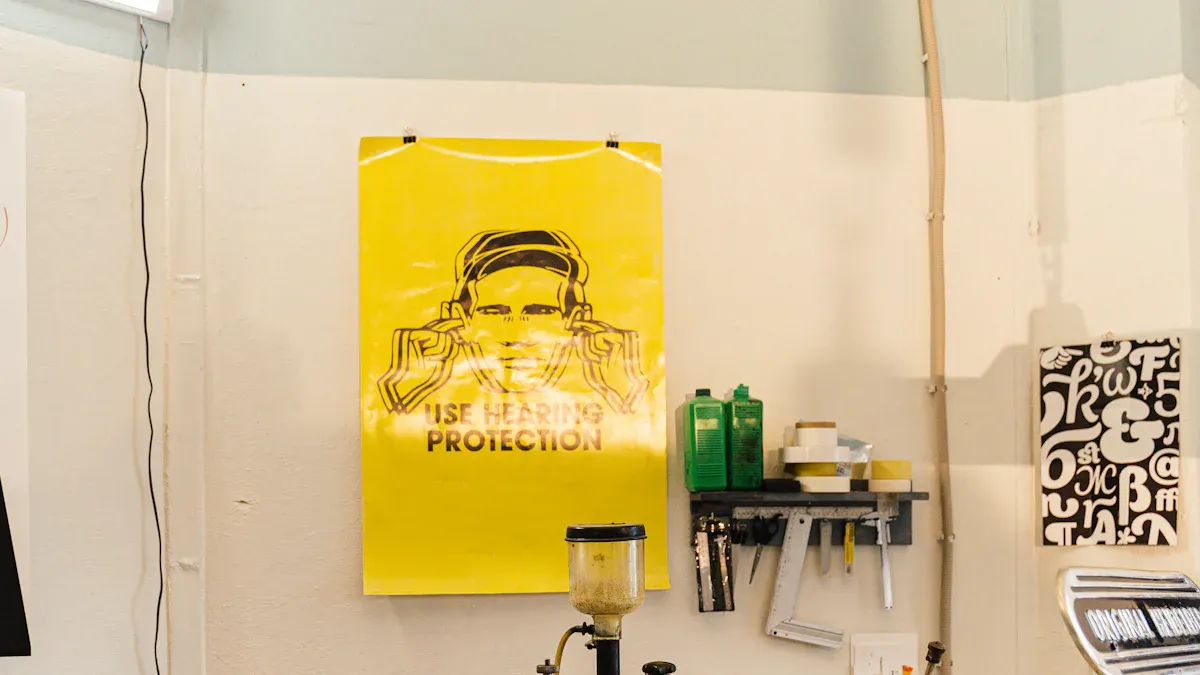
When considering what is a giclee print vs art print, the primary difference lies in quality. Giclée fine art prints utilize specialized inkjet printers to produce sharp, vibrant images that can endure for over 100 years with proper care. This longevity makes them an excellent choice for preserving fine art. In contrast, art prints encompass various methods, including lithography and digital printing. While art prints are generally more affordable, they may not have the same durability or brightness as giclee prints. Ultimately, both types serve their purpose, depending on your specific needs.
Key Takeaways
Giclee printing technology are high-quality and can last over 100 years.
Art prints cost less and are easy to find for decorating.
Fine Art Giclee prints use special printers and inks for bright colors.
Art prints are made in many ways, like lithography or digital.
Pick giclee prints for fine art or long-lasting displays.
Art prints are great for saving money and simple decorations.
Think about your budget and needs to choose the right print.
Giclee prints can be made in different sizes and materials.
What Is a Giclee Print vs Art Print?
Giclee Print: Definition and Characteristics
Giclee prints are the best in modern art printing. The word “giclee” (said zhee-clay) comes from the French word “gicler,” meaning “to spray.” This name describes the advanced inkjet process used to make these prints. Giclee prints are known for their museum-level print quality, detail, and long-lasting nature.
Main features of giclee prints include:
High resolution: They need at least 300 DPI to show fine details.
Archival materials: Made with acid-free paper, often 100% cotton, for durability.
Pigment-based inks: These inks resist fading and keep colors bright for over 100 years.
Specialized printers: They use 12-color inkjet printers for accurate and vibrant colors.
Whether you’re copying famous art or making digital designs, giclee prints are top-notch for quality and lasting beauty.
Art Print: Definition and Characteristics
Art prints include many types of printed art, from old methods like lithography to newer digital ones. These prints are affordable and easy to find for art lovers. Unlike giclee prints, art prints may not focus on lasting quality.
Common types of art prints are:
Lithographs: Made on flat surfaces, they have rich colors and fine details.
Screen prints: Ink is pressed through stencils, creating bold and bright designs.
Digital art prints: Made with regular inkjet printers, great for casual or decorative use.
The quality of art prints depends on the materials and methods used. While they don’t last as long as giclee prints, they are popular for being affordable and versatile.
Key Distinctions Between Giclee and Art Prints
Knowing the differences between giclee and art prints helps you decide what’s best. Here’s a simple comparison:
Feature | Giclee Prints | Art Prints |
|---|---|---|
Printer Type | Special inkjet printers with pigment-based inks | Regular inkjet printers with dye-based inks |
Resolution and Color | High resolution, full color range | May not fully match original art |
Paper Quality | Uses archival paper for long life | Quality varies, often not archival |
Longevity | Lasts longer, resists fading | Shorter life, fades faster |
Perception of Originality | Seen as less original due to digital process | More original if handmade |
Market Dynamics | Risk of too many copies being made | Usually more unique |
Giclee prints are best for quality, durability, and color accuracy. Art prints are cheaper and offer more variety. Knowing these differences helps you pick what fits your needs.
Giclee Prints: How They’re Made and Their Quality
Steps to Make Giclee Prints
Making fine art giclee printing needs careful steps for top quality. First, a high-resolution photo of the artwork is taken. This captures every small detail of the original piece. Then, the colors are matched to look just like the original. A test print is made to check for any needed changes. ( Contact us for fine art printing services.)
After the test is approved, the final printing starts. Special inkjet printers with long-lasting inks are used. Once printed, the artwork dries and may get a protective layer for extra strength. Finally, the print is checked for accuracy and sometimes signed by the artist. These steps ensure giclee prints are of the best quality.
Materials Used in Giclee Printing
Giclee printing uses top-quality materials for long-lasting results. The paper or canvas is acid-free and often made from 100% cotton. This keeps the prints from turning yellow over time.
The inks are pigment-based, not dye-based. Pigment inks last longer and keep colors bright. They resist fading, even in light. Together, the special paper and inks make giclee prints stay beautiful for many years.
Why Giclee is long-lasting print
Giclee prints last long because of the materials and methods used. “archival prints” means they can stay in good condition for up to 80 years in normal light. In darkness, they can last up to 200 years.
The use of acid-free paper and archival inks makes them durable. Unlike other prints, they don’t fade or yellow easily. This makes them perfect for artists and collectors who want prints that last a long time.
Feature | Details |
|---|---|
Image Quality | Very sharp images with accurate colors. |
Longevity | Made to last long with special inks and paper. |
Printing Process | Careful steps ensure the best results. |
Limited Editions | Often made in small batches, making them more valuable. |
Market Value | Limited giclee prints can sell for more than other prints. |
Choosing giclee prints means getting a highest quality prints, long-lasting piece of art.
Superior Color Accuracy and Detail
Reproducing art needs accurate colors and fine details. Giclee prints are great at this, offering top-notch quality. How do they achieve such precision? It’s because of the advanced tools and materials used.
Special inkjet printers spray tiny drops of pigment-based ink. They print on archival paper or canvas. These printers use up to 12 ink colors. This helps them create many shades and smooth color transitions. Every tone in the original art is carefully copied. The result is a print with bright colors and amazing details, almost like the original.
Color accuracy is another key feature of giclee. The process includes careful color matching. Artists and printers adjust colors during test prints. This ensures the final print looks just like the original. This makes giclee prints perfect for fine art and photos.
The materials used also keep the quality high. Giclee prints are made on acid-free, archival paper or canvas. These materials make colors vibrant and last for decades. Unlike regular prints, they don’t fade or turn yellow over time. They stay beautiful for years.
Artists and collectors love the precision and durability of giclee. Whether displaying art or saving a photo, giclee prints offer lasting quality.
Tip: For long-term display, choose prints with accurate colors and details. Giclee is a dependable choice to protect your artwork.
Art Prints: Types and Features
Types of Art Prints
Art prints come in many forms, each with unique traits. Knowing these types helps you pick the right one.
Traditional Art Prints (e.g., lithographs, screen prints)
Traditional art prints use old methods and often involve handwork. These techniques have been loved by artists for a long time.
Lithographs: Made by drawing on flat surfaces like stone or metal. Ink sticks only to the drawn areas, creating detailed images.
Screen Prints: Ink is pushed through a stencil or mesh onto a surface. These prints are bold and colorful, great for posters and art.
Etchings and Engravings: Designs are carved into metal, then inked to make detailed, textured prints.
Digital Print
Digital art prints are a newer option. They are made from digital files and printed with inkjet technology or laser printers. While not handmade, they are flexible and easy to create.
Wall Art: Used for framed art, wallpapers, or stickers. They are simple to make and customize, perfect for homes or businesses.
Decorative Prints: Includes abstract designs or photo reproductions, offering many styles to choose from.
Note: Personalized home décor has made digital prints very popular. They are great for creating unique, affordable wall art.
Materials Used in Art Prints
The materials used affect how good and long-lasting art prints are. Traditional and digital prints use different materials, each with benefits.
Fine Art Paper: Often made from cotton, it’s strong and high-quality. It comes in different textures and finishes for great results.
Acrylic and Oil Paints: Used in traditional prints, they are bright and long-lasting.
Charcoal and Graphite: These materials are stable but may wear out depending on their binders.
Pigment-Based Inks: These inks last longer and fade less than dye-based inks. They work well for both traditional and digital prints.
Picking the right materials helps keep your art prints looking great for years.
Quality and Durability of Art Prints
The quality and lifespan of art prints depend on how they’re made. Traditional prints often have rich textures and handmade details. Digital prints are easier to make and customize.
Ink Type | Longevity Rating | Testing Method |
|---|---|---|
Various inks | Over 80 years for fade resistance | Accelerated light fastness testing |
Giclee prints | Independent testing facilities | |
Photo prints | 15 years | Comparative longevity assessment |
Traditional prints, like lithographs and screen prints, use materials that resist fading and yellowing. Digital prints can last long too, depending on the ink and paper. Using pigment-based inks and fine art paper makes digital prints last as long as traditional ones.
Think about how long you want your art to last. For short-term use, digital prints are fine. For collectible or fine art, choose better materials for durability.
Affordability and Accessibility
Art prints are an easy way to add creativity to your space. They come in many styles and prices, making them popular. Whether decorating your home or buying a gift, art prints let you enjoy beautiful designs without spending too much.
Art prints are cheaper because of how they’re made. Unlike giclee prints, which use fancy materials and printers, art prints use simpler methods. This lowers costs and allows for mass production. For example, digital art prints are made in large amounts, making them even more affordable.
Art prints have become more available in recent years. Here’s why:
More people want home décor as they spend more time at home. Art prints are an easy way to make spaces personal.
People in growing markets have more money to spend on affordable wall art.
Social media inspires people to show their style with art, making prints trendy and easy to find.
Not all art prints are cheap, though. Limited-edition prints can cost more. Many people choose mass-produced prints because they’re more affordable. These options let you enjoy art without paying high prices.
The price of art prints depends on several things. Production methods, materials, and competition all affect the cost. By picking prints made with standard materials, you can get great designs for less than giclee prints. While giclee offers better quality, art prints are a budget-friendly way to enjoy art every day.
If you want affordable and stylish art, choose art prints. They give you many designs and styles to explore without overspending. Whether you like traditional or digital art, there’s something for every taste and budget.
Tip: Think about why you’re buying art. For casual or decorative use, art prints are a smart and affordable choice.
Key Differences Between Giclee Prints and Art Prints
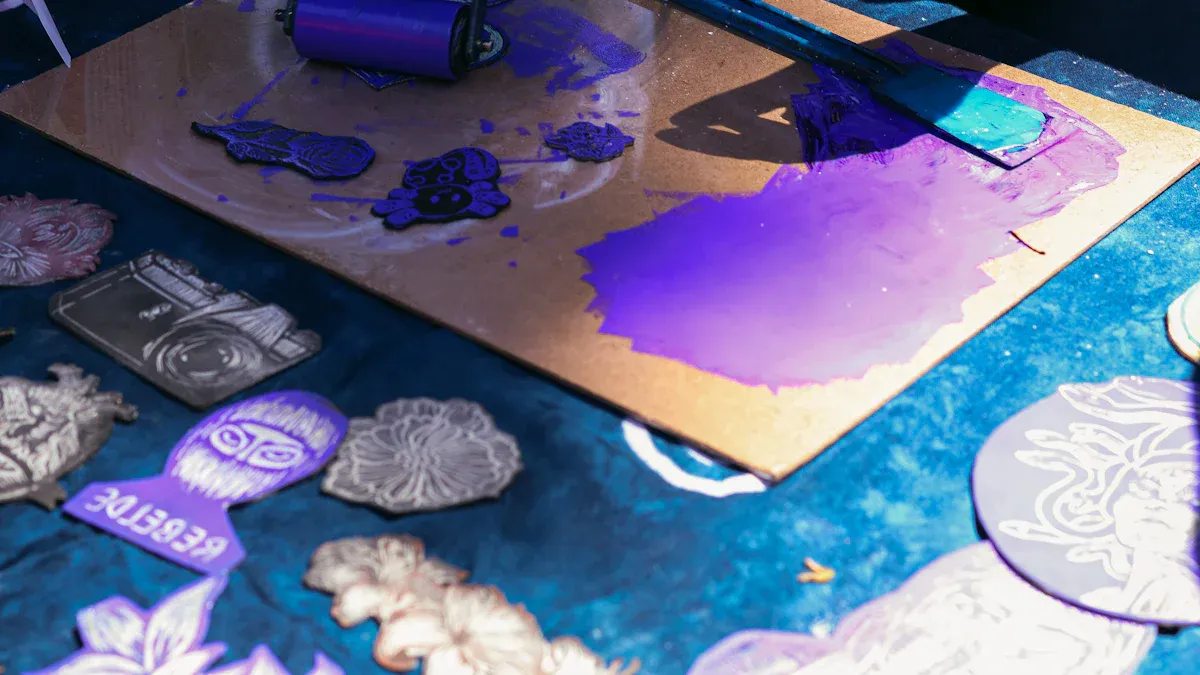
Production Processes
Giclee and art prints are made in different ways. These methods affect their quality and how long they last. Giclee prints use advanced inkjet printers. These printers spray pigment-based inks onto special paper or canvas. This process creates sharp details and bright colors that look like the original art. On the other hand, art prints often use older methods like lithography or screen printing. These techniques may involve handwork, giving unique textures but less accuracy.
Here’s a simple comparison of the two:
Feature | Giclee Prints | Art Prints |
|---|---|---|
Printing Technology | Advanced inkjet printing technology | Various traditional methods (e.g., lithography) |
Ink Type | Pigment-based inks | Typically dye-based inks |
Resolution and Color | High resolution and full-color spectrum | May not match original art fully |
Paper Quality | Archival paper for durability | Varies, often not archival |
Longevity | Longer lifespan, resistant to fading | Generally shorter lifespan |
Giclee prints are great for detailed and lasting art. Art prints, however, offer more styles and creative techniques for variety.
Materials and Inks
The materials and inks used make a big difference in quality. Giclee prints use pigment-based inks that last a long time and resist fading. These inks can stay bright for up to 80 years in light and 200 years in darkness. The paper or canvas is usually 100% cotton and acid-free. This keeps the print from turning yellow over time.
Art prints often use dye-based inks. These inks cost less but fade faster. The materials for art prints vary, from regular paper to textured surfaces. This allows for creativity but may not last as long.
Tip: For a print that lasts many years, pick one with archival materials and pigment-based inks.
Quality and Color Accuracy
Giclee prints are known for their high quality and accurate colors. They use up to 12 pigment-based inks, while regular printers use only four. This wider range of colors creates smooth gradients and matches the original art closely. The result is a print with fine details and vibrant colors.
Art prints are flexible but may not be as precise. Their quality depends on the method and materials used. For example, lithographs have rich textures but may not be as bright as giclee prints. Digital art prints are easy to make but often lack depth and detail.
For giclee prints, careful color matching is key. Printers and inks are calibrated to ensure the final print looks like the artist’s vision. Archival inks with a wide color range improve the quality, making these prints a favorite for artists and collectors.
Note: Giclee prints are archival, meaning they can stay beautiful for decades. They are a smart choice for anyone wanting long-lasting art.
Longevity and Durability
Giclee prints last much longer than regular art prints. They are made with top-quality pigment inks and special materials. These features help them keep their colors and details for many years. If cared for properly, giclee prints can stay vibrant for over 100 years. The acid-free paper or canvas used stops yellowing and fading, keeping the artwork looking fresh.
On the other hand, traditional art prints don’t last as long. They often use cheaper inks and non-archival paper. These materials fade and discolor faster. While they work well for decoration, they aren’t ideal for long-term display or collecting.
Here’s a quick comparison of durability between giclee and other art prints:
Feature | Giclee Prints | Other Art Prints |
|---|---|---|
Lifespan | Over 100 years with proper care | Shorter lifespan |
Ink Quality | High-quality pigment inks | Regular inks |
Paper Type | Acid-free and archival | Non-archival options |
Color Fading | Resists fading | Fades more easily |
Durability | Very durable | Less durable |
If you want art that lasts, giclee prints are the best choice. Their advanced printing and premium materials make them stand out.
Tip: Keep giclee prints away from sunlight and in a safe place to help them last longer.
Cost and Affordability
Giclee prints cost more than regular art prints. This is because they use better materials and a detailed process. However, they are a good option for those who want high-quality art without buying originals. Giclee prints look very close to the original artwork, making them popular with collectors.
Traditional art prints are cheaper and easier to afford. They are made in large amounts using simpler methods. This makes them great for people who want nice decorations without spending too much.
For artists, giclee printing has benefits too. You don’t need to make many prints upfront. Instead, you can print them only when someone buys them. This saves money and reduces risks. It’s a smart way to offer high-quality prints without big costs.
Here are some key points about the cost of giclee and traditional prints:
Giclee prints cost more but last longer and look better.
They can last over 100 years if cared for properly.
Artists can save money by printing giclee prints on demand.
Traditional prints are cheaper and good for casual use or décor.
While giclee prints are pricier, their quality and durability make them worth it. If you’re on a budget, traditional prints are a good alternative.
Note: Think about your needs and budget before choosing. Giclee prints are great for quality and longevity, while traditional prints are better for saving money.
Benefits of Giclee Prints
Archival Quality and Longevity
Giclee prints are known for lasting a very long time. They use pigment-based inks and acid-free materials, which stop fading and yellowing. This makes them perfect for artists and collectors who want their art to stay beautiful. The special materials used in giclee printing keep the colors and details bright for many years.
To help giclee prints last longer, follow these tips:
Use UV-protective glass to block sunlight.
Store them in acid-free sleeves to avoid damage.
Keep them in a cool, stable place away from direct light.
With proper care, giclee prints can stay in great shape for over 100 years. This makes them a smart choice for anyone wanting to protect their art or photos for a long time.
Superior Color Accuracy
Giclee prints are amazing at copying colors exactly as they are. They use up to 12 pigment-based inks, while regular printers only use four. This gives them a wider range of colors, making gradients smooth and colors accurate. The final print looks just like the original artwork.
The printers spray tiny drops of ink onto special paper or canvas. This method captures even the smallest details, like brushstrokes and textures. Artists love this because it shows their work exactly as they imagined it.
For fine art and photography, color accuracy is very important. Giclee prints are the best choice for professionals who need high-quality reproductions.
Tip: To keep giclee prints looking vibrant, avoid direct sunlight and use UV-protective frames.
Ideal for Fine Art Reproduction
Giclee prints are the best for copying original art. They use high resolution and special inks to show every detail of the artwork. Whether it’s a painting, drawing, or photo, giclee prints make the colors, textures, and depth look just like the original.
Artists often pick giclee for limited-edition prints because of its great quality. Collectors also like giclee prints because they keep the original artwork’s beauty over time. Unlike other printing methods, giclee makes every copy feel as special as the original.
If you want to create or buy a copy of original art, giclee is the top choice. Its long-lasting quality and precision make it perfect for preserving fine art.
Customization Options
Giclee printing offers great flexibility for making personalized art. Whether you’re an artist, collector, or decorating your space, you can adjust the prints to fit your needs. This ensures the final piece matches your vision perfectly.
Size Options
You can pick from many sizes with giclee printing. Want a small print for a cozy spot? Or a large one to stand out? Giclee can do both. The advanced printers keep the quality high, no matter the size. Your artwork will stay detailed and colorful, even when resized.
Material Choices
Choose from different materials to get the look you want. Giclee prints can be on fine art paper, canvas, or special materials like watercolor paper. Each material gives a unique texture and finish. Canvas offers a classic gallery feel, while fine art paper gives a smooth, polished look.
Color Adjustments
Giclee printing lets you adjust colors exactly how you want. You can brighten tones or match specific color palettes. This is helpful for artists who want their prints to look just like their original work. Giclee’s color accuracy ensures the changes look natural and vibrant.
Limited Editions and Personalization
Artists can create limited-edition giclee prints, often signed and numbered. This adds value and makes the prints special. You can also add custom text, borders, or designs to personalize your prints. This makes giclee great for unique gifts or special keepsakes.
Tip: Think about the purpose of your artwork when customizing. For fine art, focus on materials and color accuracy. For decoration, try creative sizes or personal touches.
Giclee customization makes it easy to create high-quality, unique art. Whether copying a masterpiece or designing something new, giclee helps bring your ideas to life.
Benefits of Art Prints
Affordability and Accessibility
Art prints are a budget-friendly way to enjoy amazing art. They let you decorate your home beautifully without spending too much. Many art prints are made in large amounts, which lowers their cost. This makes them easy to buy for everyone, not just collectors or galleries.
The wall art market was worth $53.05 billion in 2022. It is expected to grow by 5.4% each year until 2030. This shows how more people want affordable home decorations. Online shopping and cheaper options have made art prints even more popular. Simple designs, liked by 59% of buyers, are perfect for modern homes.
For artists, selling prints helps them reach more people. They can share their work with buyers all over the world. Prints also give artists a steady income since they can sell the same design many times. Whether you’re an artist or a buyer, art prints are a smart and easy choice.
Variety of Styles and Techniques
Art prints come in many styles and methods, offering lots of choices. From old techniques like lithography to new digital ones, there’s something for everyone. Each method has its own special look, so you can pick what fits your taste.
Lithographs often have detailed textures, while screen prints are bold and colorful. Digital prints are flexible and follow modern trends. This wide range means you can find prints for any space, from cozy homes to offices.
Art prints also cover many themes. You can choose abstract designs, nature scenes, or famous artwork copies. This variety makes it easy to find prints that match your personality and style.
Suitable for Decorative Purposes
Art prints are great for making your rooms look better. They add charm and warmth to plain walls, turning them into eye-catching spots. Whether you like simple designs or a mix of styles, art prints help you create the look you want.
More people are decorating their homes, increasing the demand for art prints. Spending more time at home has made personalizing spaces important. Social media also inspires people to use art in their décor. Art prints are affordable and come in many styles, making it easy to follow these trends.
You can use art prints to match your home’s theme. For example, flower prints can make your living room feel natural. Bright abstract prints can bring energy to your office. There are endless ways to use art prints to show your creativity.
Tip: Pick art prints that match your room’s size and colors. This helps them fit well with your décor and create a balanced look.
Easy to Make in Large Numbers
Art prints are simple to make in big amounts. This is because commercial printers are built for high-volume work. They let you create many copies of the same design quickly. Whether you’re an artist selling art or a buyer wanting cheaper options, this makes art prints a smart choice.
Big commercial printers help with bulk printing. These machines can print many images at once, saving time. New technology, like heat-bonded inks and special inkjet printers, also improves speed and quality. This means you can make lots of prints without losing detail or color.
The materials used for art prints make them easy to produce. Regular paper and dye-based inks are cheap and easy to find. These materials help create prints in large numbers without costing too much. For artists, this means you can sell your work to more people at lower prices.
Another benefit of bulk printing is consistency. Modern printers make sure every print looks almost the same as the original. This is important for decoration, where buyers want the same quality in every piece. Using good machines and materials keeps the quality high, even in large batches.
Bulk printing also helps stores and businesses. They can stock up on popular designs and meet customer needs quickly. For example, if a print becomes popular, more copies can be made fast to keep up with sales. This makes art prints a flexible option for both creators and buyers.
Choosing Between Giclee Prints and Art Prints
When to Choose Giclee Prints
For Fine Art Reproduction
Giclee prints are the best for copying fine art. They show every detail, like brushstrokes and soft color changes. The advanced printing process makes the print look just like the original. Artists and collectors trust giclee for keeping art’s true quality. These prints also use long-lasting materials, making them great for special collections or valuable reproductions.
For Long-Term Display or Investment
If you need art that lasts a long time, pick giclee. The acid-free paper and pigment inks stop fading and yellowing. This makes giclee prints perfect for homes, galleries, or museums. They also keep their value, making them a good choice for collectors. Whether saving family photos or buying fine art, giclee keeps prints bright for years.
When to Choose Art Prints
For Budget-Friendly Options
Art prints are perfect if you want cheaper art. They are made with simpler methods and materials, which lowers the price. If you want to decorate without spending much, art prints offer many styles and designs. They are easy to find and fit most budgets.
For Decorative or Casual Use
Art prints are great for casual or decorative purposes. They can brighten your living room or add style to your office. These prints come in many themes, like abstract art or nature scenes. If you don’t need long-lasting quality, art prints are a smart and stylish option.
Factors to Consider
When choosing between giclee and art prints, think about these points:
Purpose: Do you need a high-quality copy or just decoration? Giclee is best for fine art, while art prints work for casual use.
Budget: Giclee costs more because of better materials and methods. Art prints are cheaper and easier to buy.
Quality Preferences: If you want precision and durability, choose giclee. For variety and low cost, art prints are better.
Customization Needs: Giclee lets you customize size, material, and colors. It’s great for collectors or special projects.
By thinking about these factors, you can pick the print that fits your needs best.
Deciding between a giclee print and a regular art print depends on what you need. Giclee prints are known for their high quality and long-lasting nature. They are perfect for copying fine art or keeping artwork safe for years. Regular art prints, on the other hand, are cheaper and have unique textures. These are great for simple decoration or casual use. Many people now prefer giclee prints for their sharp details and modern look. Still, traditional prints remain popular with some collectors for their handmade charm. Think about your budget, purpose, and how long you want the art to last before choosing.
Note: Giclee prints are loved for their bright colors and sharp details. Traditional prints often focus on the beauty of handmade work.
FAQ
Why are giclee prints more expensive than regular art prints?
Giclee prints cost more because they use better materials. They are made with archival paper and pigment-based inks. The printing process creates sharp details and bright colors. These features make them last longer and great for fine art.
Can both giclee and art prints be framed?
Yes, you can frame both types of prints. Giclee prints work well with UV-protective glass because of their archival materials. Art prints don’t need special framing but look better and last longer with it.
How can you keep giclee prints in good condition?
Keep giclee prints away from sunlight and moisture. Use UV-protective glass when framing them. Store unframed prints in acid-free sleeves. These steps help keep their colors bright and stop fading.
Are giclee prints good for outdoor use?
No, giclee prints are not made for outdoor display. Sunlight, rain, and humidity can harm them. It’s best to keep them indoors in a safe environment.
Do giclee prints look like the original artwork?
Giclee prints look very close to the original art. The printing process captures small details, textures, and colors. While they aren’t originals, they are the best option for accurate reproductions.
Are art prints always less expensive than giclee prints?
Art prints are usually cheaper because they use simpler materials. But limited-edition or handmade art prints can cost more than some giclee prints. Prices depend on the method, materials, and rarity.
Can giclee prints be made in different sizes?
Yes, giclee prints can be made in many sizes. Advanced printers keep the quality high, even for large or small prints. This makes them perfect for any space, big or small.
Which is better for beginners: giclee or art prints?
Art prints are better for beginners because they cost less. They let you try different styles without spending too much. Giclee prints are better if you want high quality and long-lasting art.
Tip: Start with art prints to find what you like. Later, invest in giclee prints for better quality and value.



